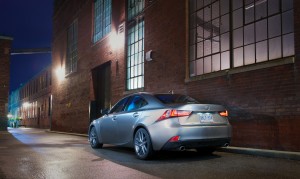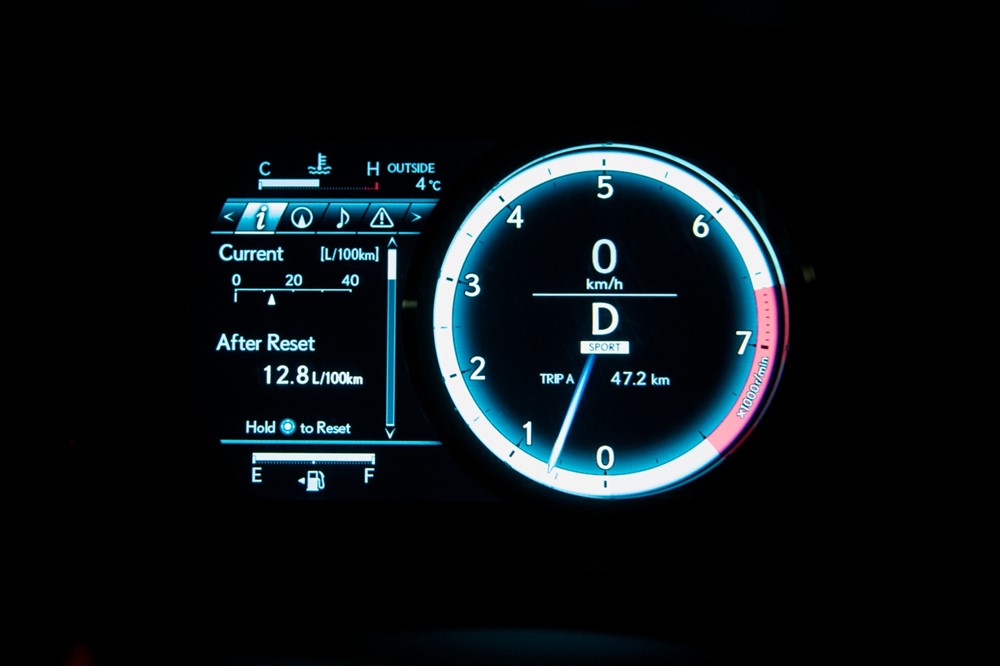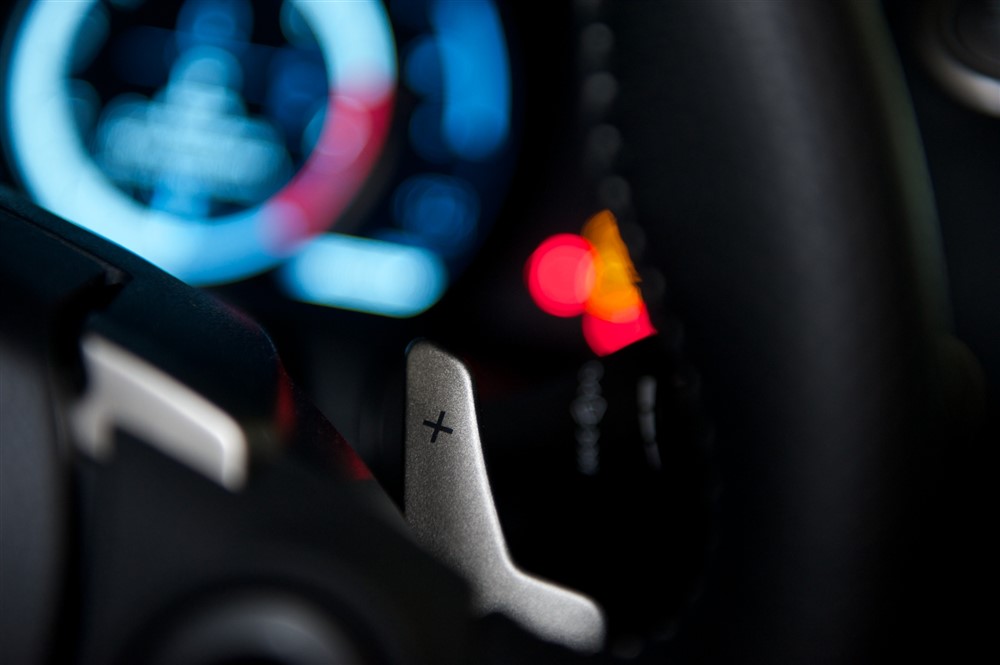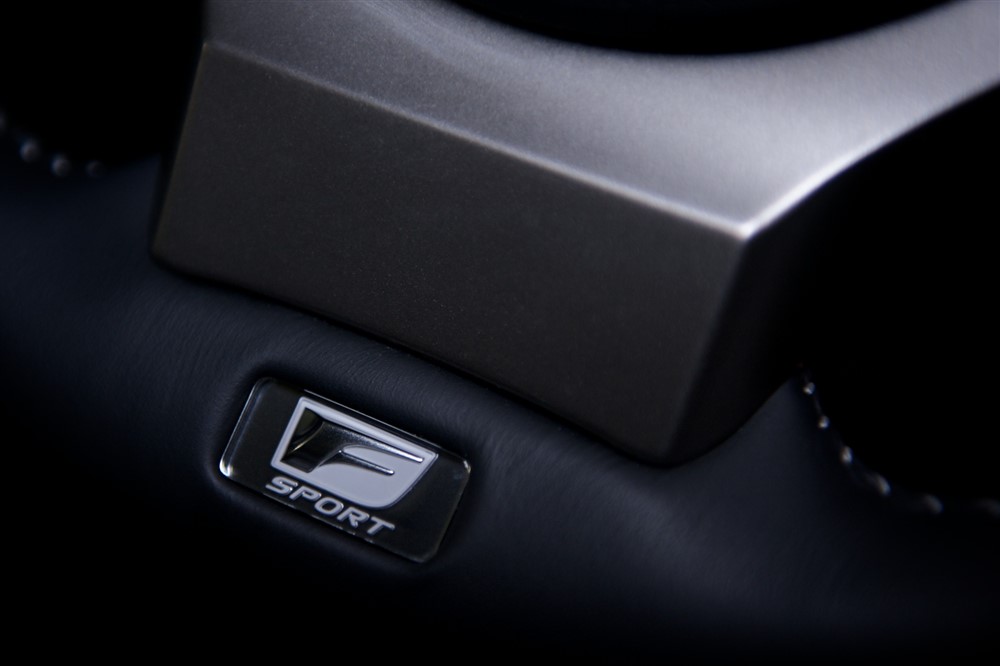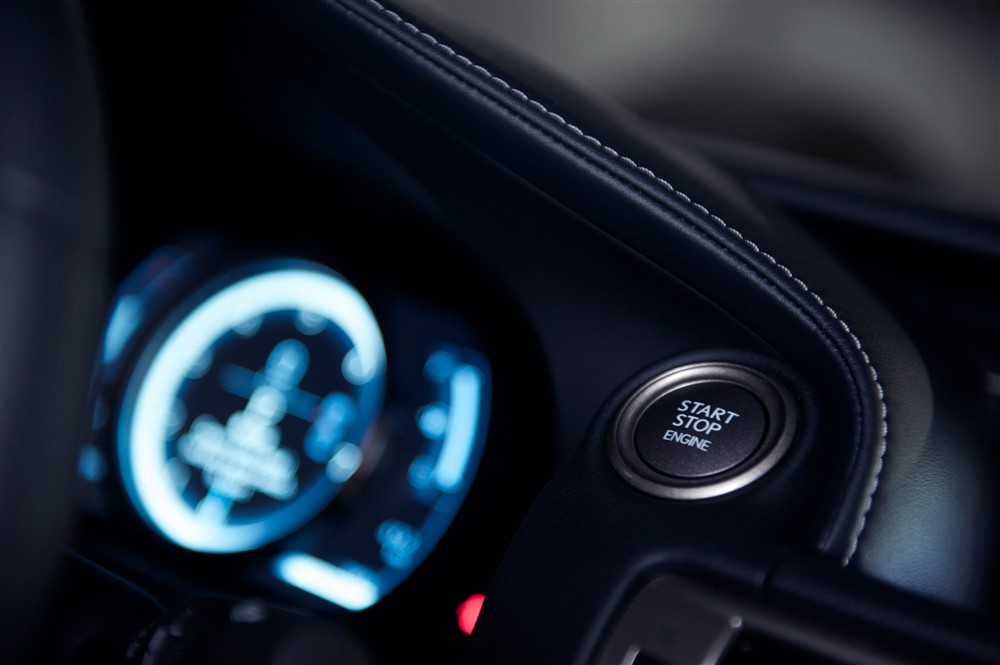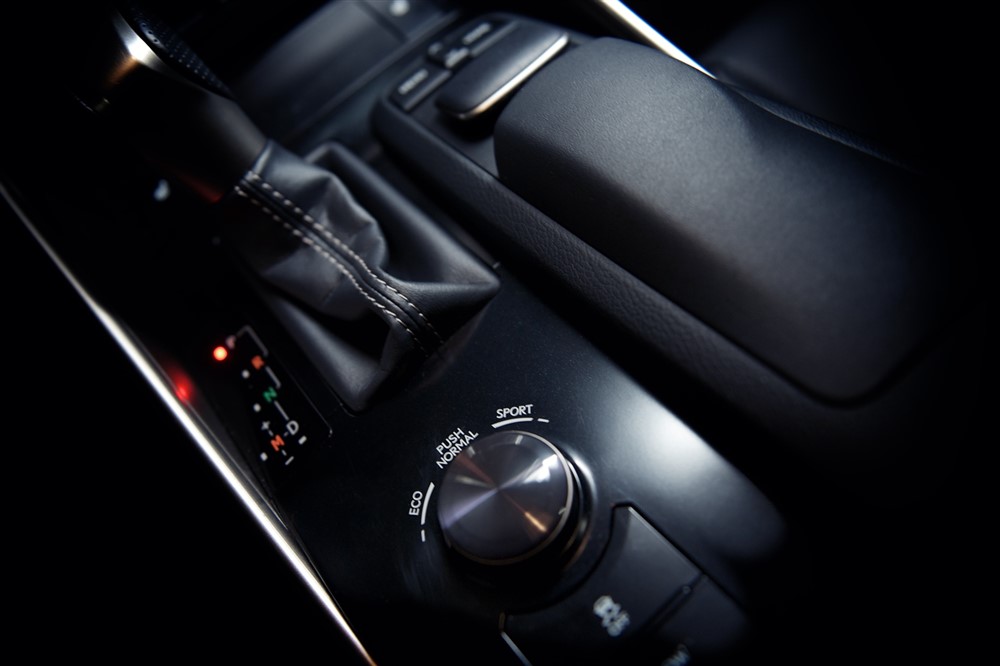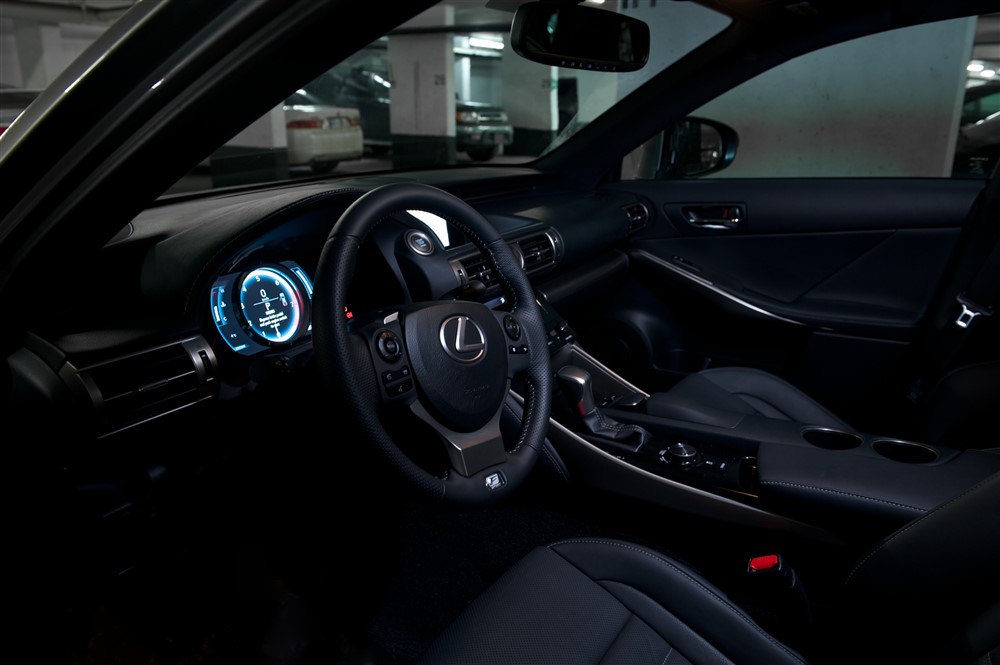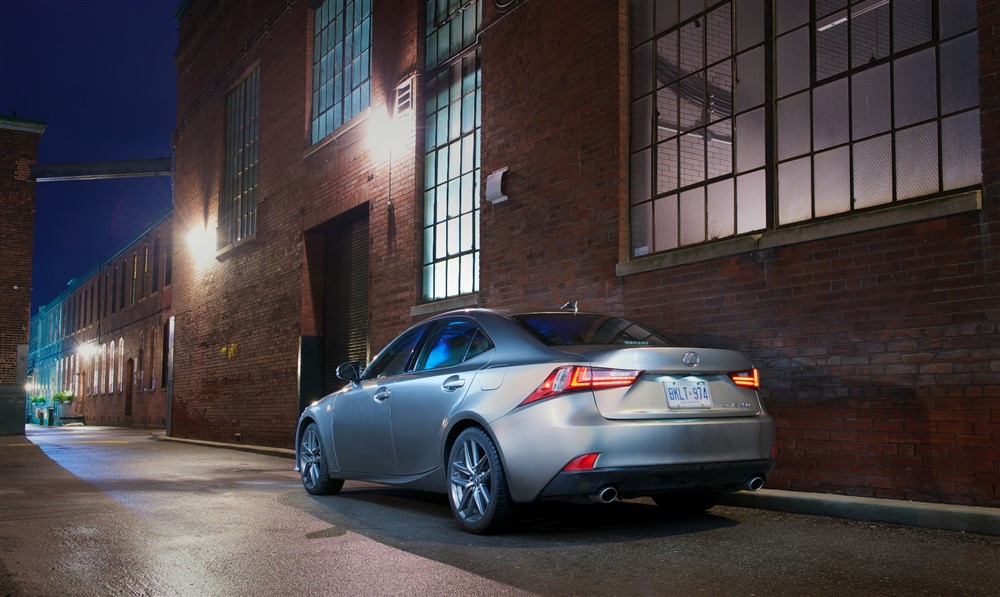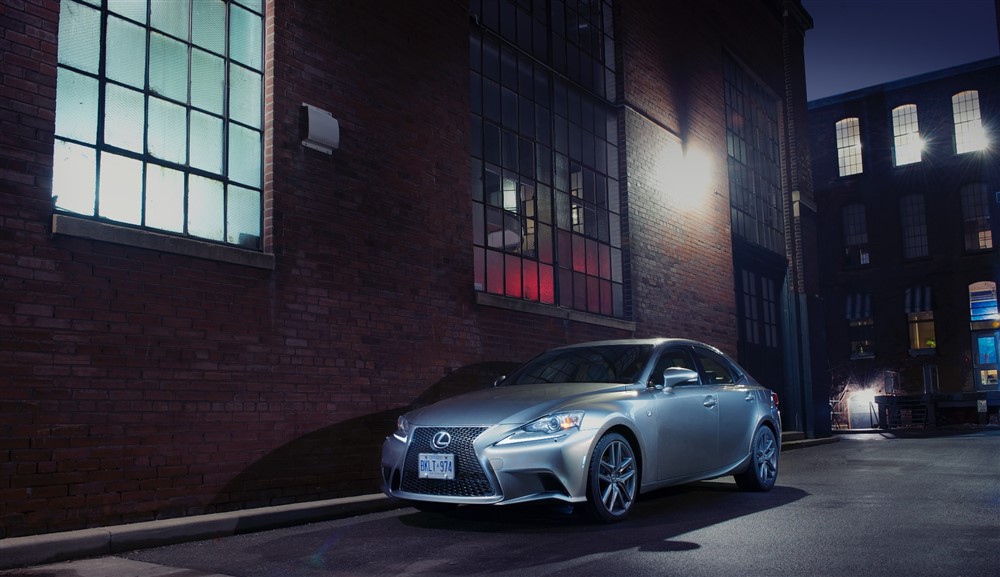Way back in 2001, the much younger version of me pined for the new Lexus IS. There were many reasons to be excited thanks to the fresh styling, lots of proven enthusiast hardware inside and out, and the work of Toyota’s best engineers. The first-generation IS300 became a sensation overnight, generating a lot of buzz, and laid the groundwork for Lexus’ assault on the established German marques. The taillights alone were the centre of discussion – affectionately known as Altezza lights, these clear-lens housings sparked what would be a staple of automotive styling for years to come. I maintained my interest in the platform for several years, and I eventually picked up my own IS300 (which I still own to this day). The second-generation IS never really excited me with its looks and driving experience, aside from the bonkers V8-powered IS-F. Needless to say, I was more than eager to check out the third-generation IS, which claims to emphasize the driving experience, under the direct orders of Toyota Motor Corporation CEO, Akio Toyoda. I wanted to know if the new IS could stack up to my own car, with its wonderful steering, silky-smooth powertrain, and lightweight feel. I picked up my Atomic Silver IS250 F-Sport Premium AWD tester and was on my way.
We were fortunate enough to be present for the unveiling of the third-generation Lexus IS in Detroit, last year. I think a lot of people were surprised at the new look of the IS – it is polarizing to say the least. It was Lexus’ most aggressive implementation of their Spindle Grille to date. The character line that swoops up from the lower rocker panel under the rear doors to join the taillights is very bold and helps to show off Lexus’ prowess in manufacturing and metal work. One item that never really did show well in photos are the broad shoulders on the IS, just below the window sills. They really do add a surprising amount of width to the car, and it all looks fantastic. Back to the Spindle Grille – it is easily the most polarizing item on the entire car. Several colleagues have vocally expressed their disapproval with the front grille, while others praised the bold design cues overall. The IS, in all its previous generations, were described by some as being conservative (read: boring), so this is a nice departure from the norm we have all become used to with Lexus. The F-Sport trim adds several items, the most obvious being that big spindle grille up front. Featuring a more aggressive “zigzag” grille pattern, detractors have claimed that the front end is too “busy”, and I would be inclined to somewhat agree. You do lose your fog lights when you check that F-Sport box, thanks to additional brake cooling ducting. You do get some gorgeous LFA-inspired 18” ten-spoke wheels, with staggered 225-section rubber up front, and 255-section rubber in the back. Overall, there’s a lot going on with the exterior of the new IS. There are certainly a lot of aspects that I like about it (the risky design, the “shoulders”, the wheels), but others I am not a huge fan of (I prefer the non F-Sport grille).
Inside, the third-generation IS interior is definitely up to what I would consider current Lexus standards. The outgoing second-generation interior was not necessarily bad, but it started to become really dated about three years into its seven year lifecycle. When you first sit in the driver’s seat, you’ll immediately notice now aggressive the bolstering is. You almost have to make a hop over the left side thigh bolster before you sink deep into the seat. While I personally thought it was great, I wouldn’t consider these seats super-friendly to drivers of all sizes. Once you settle into the seat, you’ll immediately notice the gauge cluster – easily the selling point of everything inside the car. Inside the circular silver ring is a high-resolution LCD screen, which can be moved by pressing a button on the steering wheel. Sure to impress, it can be configured in many ways to display exactly what you want – instant and average fuel efficiency readouts, gear indicator, tire pressure, and Eco rating (if you want to keep score). Shifting the tachometer to the right frees up more space for other vehicle info, but I personally like my tachometer front and centre. The gauge cluster is really something you have to see in person for yourself – and the good stuff is only available on F-Sport models.
Once you start looking around, you’ll notice lots of soft touch surfaces and tight assembly. The rest of the interior is about par for the course from Lexus, but the climate controls are a slight departure from the norm as the temperature controls are chromed touch sliders. Not to worry – you can still control the temperature by tapping on the up and down arrows as you normally would with buttons. The F-Sport Premium package adds the trademark Lexus Remote Touch Interface, seen across the lineup. This mouse-like controller integrates haptic feedback for easy menu and navigation system usage. Feedback from colleagues has been a little mixed – some like the feel of the mouse and its vibration-based feedback, but others have called it distracting. The heated steering wheel is always welcome for our Canadian winters, but the heating element in the wheel only covers the sides of the wheel – those of you who like to drive with one hand at the twelve o’clock position are out of luck. Out back, rear seat passengers are treated to much more generous knee-room relative to prior models, but one should not consider the IS a large car. The rear seats also fold down – a first for the IS. True to current standards, visibility from the driver’s seat is not the greatest, no thanks to the high sills and thick C-pillar area. Also, the large width of the centre console does reduce the width the driver and passenger have available to stretch out. All-wheel-drive models feature a hump in the floor under the driver’s right knee. This is to accommodate the transfer case, and was not an issue in my testing. So, like the exterior, the interior also has a lot going on, but I feel it won’t look outdated for quite some time.
As much as the exterior and interior have been massively updated, the powertrains that anchor the IS remain largely the same. My tester is powered by a 2.5L direct-injected V6 gasoline engine, which produces 204hp at 6400rpm and 185lb-ft of torque at 4800rpm. This particular car sends its power to all four wheels via a six-speed automatic transmission and centre transfer case. Critics are quick to point out the carryover powertrain, and how, on paper, it lags (pun not intended!) behind many of its turbocharged four-cylinder competitors. Yes, the IS250 is not considered very fast on the spec sheet (0-100km/h in approximately 8.3 seconds), but I found the V6 more than adequate for urban and suburban duty. The strong point of the little V6 is its smoothness and character. As good as the competitor turbo-fours are, none of them sound particularly good, and it’s hard to eliminate the vibrations a four-cylinder engine will exhibit. The engine intake sound generator pipes some of the V6 music into the car when pushed hard into the upper rev range, where the engine is happiest to produce power. For those still unsatisfied with the little engine that could, the simple solution to the IS250’s apparent power deficit is available in the IS350. Personally, I would go with the larger 3.5L V6 –a hundred horsepower more for a few thousand dollars more isn’t a bad deal, relatively speaking. I also think it’s safe to assume Lexus and Toyota are working on a new turbocharged four-cylinder engine to replace their smaller V6s. Once it arrives, expect to see a variant in the entry-level IS.
One reason why many entry-level luxury sport sedans have gone to turbocharged four-cylinder engines is fuel efficiency. The priorities of your average consumer nowadays have shifted somewhat away from pure performance to how a car will affect their bottom line. The fact that it was so cold during my week with this IS250 wasn’t going to help its fuel efficiency, and the additional friction losses associated with the all-wheel-drive system also takes its toll. It is rated at 10.4L/100km in the city, 7.3L/100km on the highway, and 9.0L/100km in a combined cycle. I only managed an average of 12L/100km in about 70% city driving.
Base model pricing of the IS250 starts at $37,300, for a rear-wheel-drive model. Stepping up to an all-wheel-drive model will cost you $39,900. The F-Sport Premium package that my tester had adds $6,250, bringing you to a subtotal of $46,150. This undercuts the BMW 328i xDrive with the Sport line by about $4,000. The IS represents a fairly good value against its European competitors, but I would personally spring for the IS350 with the same F-Sport package. Skipping the all-wheel-drive system keeps the price delta to about $3000. You get the extra power, but you also get access to the variable suspension dampers and the excellent upgraded 8-speed automatic transmission derived from the unit in the fire-breathing IS-F.
I got back into my own IS300 after six full days, and was surprised how much of a difference ten years can make. Both cars are excellent, just at different things. My car, by comparison, still provides a refreshing take on the “less is more” driver’s-focused philosophy. Visibility out of the older car was much better, and more glass makes for a much more airy interior feel. It doesn’t have the gadgets and gizmos, but it gets the important items right, such as good hydraulically-assisted steering and a limited-slip rear differential. The 2014 IS250 is loaded to the gills with high-tech features, modern style, and the practicality of all-wheel-drive. Its main competitor, the BMW 3-Series has taken a slightly different direction, focusing on ride comfort. That’s what the market is looking for, but the way Lexus mixes in the driving dynamics makes it a worthwhile choice, if you can decide whether the new styling is for you or not. Considering the people who have stopped me on the street to offer up compliments, I think Lexus’ polarizing design language is doing its job in getting the conversation started.
2014 Lexus IS250 F-Sport Gallery
Photos by: Theron Lane
See Also:

